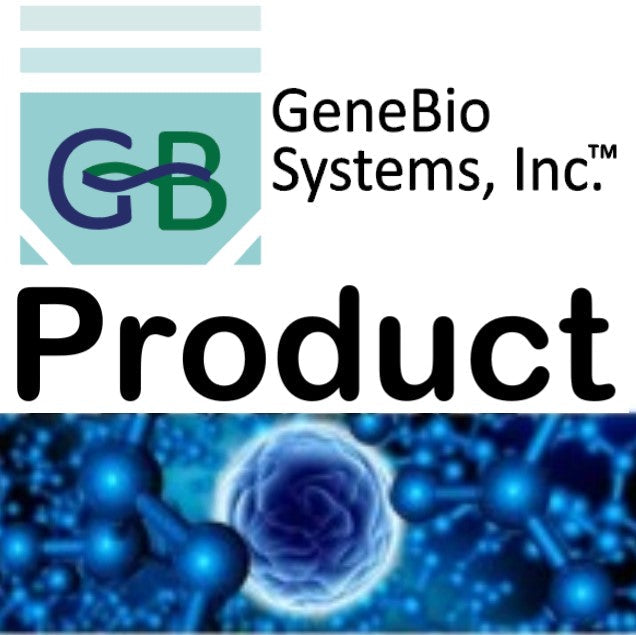Gene Bio Systems
Recombinant Human Polyadenylate-binding protein 1(PABPC1),partial
Recombinant Human Polyadenylate-binding protein 1(PABPC1),partial
SKU:CSB-EP017352HU
Couldn't load pickup availability
Size: 200ug. Other sizes are also available. Please Inquire.
In Stock: No
Lead time: 10-20 working days
Research Topic: Epigenetics and Nuclear Signaling
Uniprot ID: P11940
Gene Names: PABPC1
Organism: Homo sapiens (Human)
AA Sequence: MNPSAPSYPMASLYVGDLHPDVTEAMLYEKFSPAGPILSIRVCRDMITRRSLGYAYVNFQQPADAERALDTMNFDVIKGKPVRIMWSQRDPSLRKSGVGNIFIKNLDKSIDNKALYDTFSAFGNILSCKVVCDENGSKGYGFVHFETQEAAERAIEKMNGMLLNDRKVFVGRFKSRKEREAELGARAKEFTNVYIKNFGEDMDDERLKDLFGKFGPALSVKVMTDESGKSKGFGFVSFERHEDAQKAVDEMNGKELNGKQIYVGRAQKKVERQTELKRKFEQMKQDRITRYQGVNLYVKNLDDGIDDERLRKEFSPFGTITSAKVMMEGGRSKGFGFVCFSSPEEATKAVTEMNGRIVATKPLYVALAQR
Expression Region: 1-370aa
Sequence Info: Partial
Source: E.coli
Tag Info: N-terminal 6xHis-SUMO-tagged
MW: 57.8 kDa
Alternative Name(s):
Relevance: Binds the poly(A) tail of mRNA, including that of its own transcript. May be involved in Cytoplasmic domain regulatory processes of mRNA metabolism such as pre-mRNA splicing. Its function in translational initiation regulation can either be enhanced by PAIP1 or repressed by PAIP2. Can probably bind to Cytoplasmic domain RNA sequences other than poly(A) in vivo. Involved in translationally coupled mRNA turnover. Implicated with other RNA-binding proteins in the Cytoplasmic domain deadenylation/translational and decay interplay of the FOS mRNA mediated by the major coding-region determinant of instability (mCRD) domain. Involved in regulation of nonsense-mediated decay (NMD) of mRNAs containing prature stop codons; for the recognition of prature termination codons (PTC) and initiation of NMD a competitive interaction between UPF1 and PABPC1 with the ribosome-bound release factors is proposed.
Reference: Human senataxin resolves RNA/DNA hybrids formed at transcriptional pause sites to promote Xrn2-dependent termination.Skourti-Stathaki K., Proudfoot N.J., Gromak N.Mol. Cell 42:794-805(2011)
Purity: Greater than 90% as determined by SDS-PAGE.
Storage Buffer: Tris-based buffer,50% glycerol
Storage: The shelf life is related to many factors, storage state, buffer ingredients, storage temperature and the stability of the protein itself. Generally, the shelf life of liquid form is 6 months at -20℃/-80℃. The shelf life of lyophilized form is 12 months at -20℃/-80℃.
Notes: Repeated freezing and thawing is not recommended. Store working aliquots at 4℃ for up to one week.


